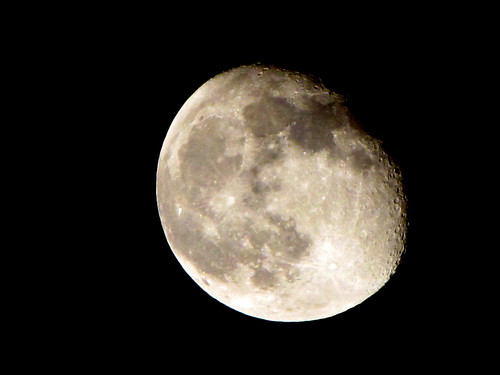Exploration vs. Scientific Modes of Spaceflight
/
Now that I've since finished my last seminar of classwork for my Master's, I've begun to switch gears and begun work on my Capstone Paper, the final paper before I get my diploma, should I pass. I'm very excited to begin this mode of work, because I've gotten a topic that I've gotten really interested in - the Space Race. Originally, I'd intended on studying something with the comic book industry and the Second World War, but there's a huge lack of sources. Since then, I've switched gears, and will be looking to the early days of Mercury, Gemini and Apollo, and the military roots and implications that the American space program represented to the United States during the Cold War. I'm still working to narrow down my sources, and will likely spend the weekend working through sources to get a comprehensive bibliography put together, along with a tighter thesis.
While talking with my program director earlier today, I came across a realization about the space program that I hadn't realized or considered before - the current Space program will never, ever be as successful as the Mercury - Apollo era, for one simple reason - there is no certain, end all goal for the current plans for space travel. This is in no way trying to say that what we're doing up there is useless, far from it. The difference between the two is that in 1961, President John F. Kennedy set an end goal for American space ambitions. Americans would reach the lunar surface by the end of the decade - an extraordinary declaration that left many at NASA and the nation stunned, as the cumulative United States spaceflight experience amounted to a mere 15 minutes with Alan Shepherd's Freedom 7 flight earlier in the year.
From that point forward, there was a clear point to work to, and the space missions that came afterwards followed a specific path to reach the moon. The Mercury missions were designed to get mankind to space and into orbit, the longest time in space amounting to just over a day, with Mercury 9. Project Gemini followed with a slate of missions that were designed to test space flight, where the first docking and EVA on the US's part took place. Finally, the Apollo missions are most noted for the Apollo 11 mission that landed on the moon. This was the validation of the efforts of the US, but leading up to that saw other specialized missions that saw humanity to the moon and back, testing the Apollo hardware in each of its phases.
While reaching the moon was the most visible goal and most dramatic part of the space race, it is far from the most important aspect. The space race did a number of things, but everything was done with an overall goal in mind, one that was contested early on by mission planners who felt that we should skip the moon all together and head for the other planets. What the early missions provided was structure and essentially, building blocks that helped to bring the lunar landings from science fiction to reality.

Following the Apollo missions, there was a lull. The space shuttle program was approved, as well as Skylab, and the entire mission and focus for space shifted from an exploration model to one of scientific discovery. Skylab was essentially the turning point, utilizing leftovers from the Apollo missions for something new entirely. However, there has been no overarching goal for space since the Apollo years. The public has turned away from space and NASA's efforts up there, I suspect because of a perceived lack of purpose. The Space Shuttle, while a wonderful machine, has not really full filled any sort of plan to reach the next inevitable stage, missions to Mars, beyond scientific experiments that require a zero-gravity environment, servicing space stations and satellites. The information gathered about living in space for extended periods of time has been incredibly helpful and will no doubt be utilized in a future mission, but these experiments were not expressly conducted for a martian mission.
Mars is the next logical step for future space flight missions beyond the International Space Station (which, looking at it, is a good goal that has brought together nations, but has largely failed to capture the public's imagination like the Lunar landings did. Let's face it, walking around on the moon is a lot cooler). What is required of the United States is a large, overarching series of missions that will begin to pave the way for heading to Mars. The technology is certainly there, as is the willpower, but what is needed the most is guidance from up on high. Kennedy's statement in 1961 was a powerful catalyst that set everything in motion, and any further trips to Mars, and indeed, even the Moon, will require such a thing, but will also require a comparable plan.
Now is also the best time for such a project, when one thinks about it. At the peak of the Apollo program, NASA employed around four hundred thousand people, and that does not count the other multiple hundreds of thousands that would have worked in the defense and aerospace industries during that time designing, building and supporting the missions leading up to the space program. In a book that I've been reading, it was noted that not a single dollar was spent on the moon - it was spent on earth, and provided a massive boost to the economy during that time by supporting those industries. This is exactly what will be needed in the coming years, and I hope that with China and India beginning space programs of their own, this will provide an acute sense of urgency for US mission planners and policy makers to begin to really consider such an endeavour.
